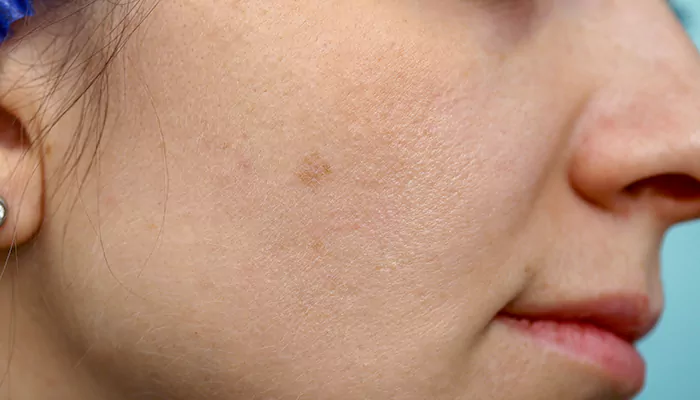
Explore the reasons behind the appearance of dry skin patches on the face, from environmental influences to hormonal fluctuations.
Have you ever wondered why those pesky dry skin patches seem to appear out of nowhere, disrupting the smooth canvas of your face? Let us delve into the intriguing world of dermatology and uncover the unique factors that contribute to the formation of dry skin patches. Read on!
Dive beneath the surface of your skin and discover the bustling ecosystem known as the skin microbiome. This complex community of bacteria, fungi, and other microorganisms plays a crucial role in maintaining skin health and hydration. However, disruptions to the delicate balance of the skin microbiome can lead to dryness and irritation, paving the way for dry skin patches to emerge on your face.
Exposure to harsh weather conditions, such as cold winds and low humidity levels, can strip away the skin's natural oils and moisture, leaving it vulnerable to dryness and flakiness. Additionally, indoor environments with central heating or air conditioning can further exacerbate the problem, creating an inhospitable environment for your skin to thrive.

Take a closer look at your hydration habits and uncover the role they play in the appearance of dry skin patches. Insufficient water intake can leave your skin parched and dehydrated, diminishing its ability to retain moisture and leading to the formation of dry patches. Additionally, excessive consumption of caffeinated or alcoholic beverages can have a diuretic effect, further exacerbating dehydration and dryness.
This protective barrier serves as a shield against external aggressors, sealing in moisture and nutrients while keeping out harmful substances. However, disruptions to the integrity of the skin barrier, caused by factors such as harsh cleansers, over-exfoliation, or genetic predispositions, can compromise its function and contribute to the development of dry skin patches.
Fluctuations in hormone levels, such as those experienced during puberty, pregnancy, or menopause, can wreak havoc on your skin, leading to increased dryness and sensitivity. Additionally, hormonal imbalances caused by conditions such as thyroid disorders or polycystic ovary syndrome (PCOS) can further exacerbate dry skin patches on your face.

Reflect on your lifestyle choices and their impact on your skin's health and vitality. Factors such as smoking, excessive alcohol consumption, poor dietary habits, and lack of sleep can all contribute to the development of dry skin patches. Additionally, stress and anxiety can trigger inflammatory responses in the body, leading to skin conditions such as eczema or psoriasis, which are characterized by dry, flaky patches on the face.
The appearance of dry skin patches on your face is often the result of a complex interplay of factors, ranging from environmental influences and hydration habits to hormonal fluctuations and lifestyle choices. By understanding the unique mechanisms underlying this common skincare concern, you can take proactive steps to address and alleviate dryness, restoring balance and vitality to your skin.